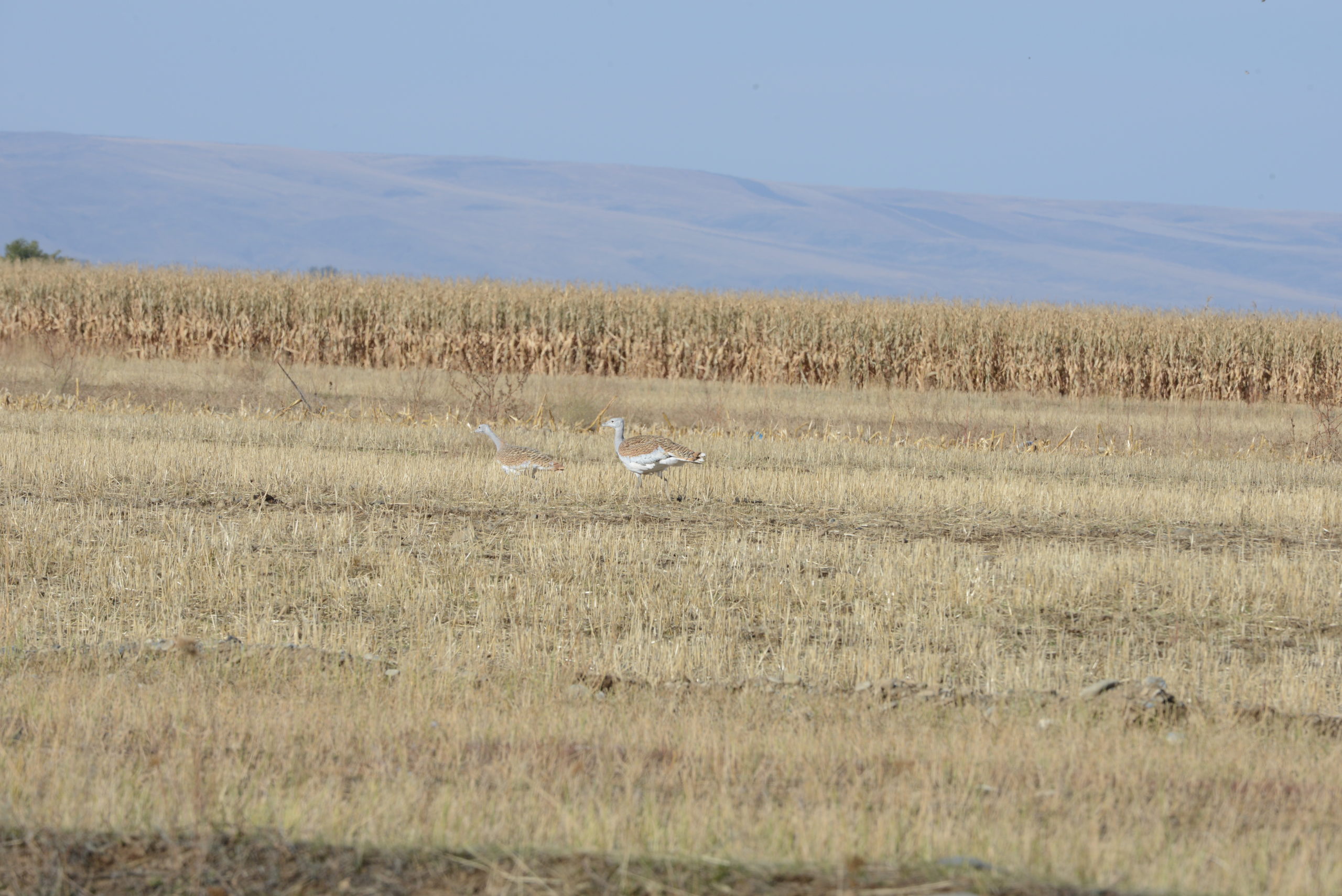Advancing Conservation of an Iconic Steppe Bird in Mongolia

![]()
Advancing Conservation of an Iconic Steppe Bird in Mongolia

Research Associate: Mimi Kessler
Project overview: Working to conserve the Great Bustard through research, education programming and developing conservation policy
Backstory: The Great Bustard is an iconic bird of Eurasian grasslands. Feeding on insects and vegetation, this bird reaches weights of up to 45 pounds, making it the heaviest bird capable of flight. With a charismatic breeding display that transforms this usually brown bird into a bustling ball of white feathers, the Great Bustard is a compelling focus for conservation and an irreplaceable part of our world’s natural heritage. The Great Bustard’s requirement for large swaths of open habitat also make it a flagship species for the conservation of temperate grasslands, the world’s least protected habitat.
Populations of the Great Bustard once stretched across the steppe zone of Asia, from Portugal to Manchuria. Today, only 2,500 individuals of the unique Asian subspecies are estimated to remain in Mongolia, southeastern Siberian Russia and northeastern China.
Dr. Mimi Kessler leads the Central Asian Great Bustard Project (CAGBP), which has worked with the Ornithology Lab of the Mongolian Academy of Sciences (OL) and the Wildlife Science and Conservation Center of Mongolia (WSCC) to collaborate on research to determine the location of remnant populations and the causes of their declines. They also carry out environmental education programs for rural youth, training a new generation of conservation biologists, developing media outreach, and pursuing conservation policy for Great Bustards.
As Great Bustards in Asia spend one-third of the year on migratory stopovers, one-third on wintering grounds, and one-third at breeding sites, a successful conservation strategy requires long-term international cooperation between countries. Mimi organized a conference in Mongolia focused on this task. The conference hosted participants from nine countries, who reported on the status of and threats to Great Bustards across the breeding and wintering range of the species in Asia. As a group, participants prioritized threats to the species and revised a Proposal for Concerted Action on the Great Bustard, which the Government of Mongolia submitted to the Convention on Migratory Species (CMS).
Current Status: The entire Special Journal Issue on Great Bustards in Central Asia, co-authored and edited by Mimi Kessler, is now available online. The issue contains seventeen articles that comprehensively cover the status and conservation threats to the Great Bustard across its Central Asian range. The heaviest bird capable of flight, the Great Bustard has experienced a 40% population decrease since the previous evaluation in 2014. This journal represents an important step in the conservation of this unique species.
Project Partners: Ornithology Lab of the Mongolian Academy of Sciences (OL) and the Wildlife Science and Conservation Center of Mongolia (WSCC)
Project start year:
Location: Mongolia
fe, Get in touch today and start making the difference.







